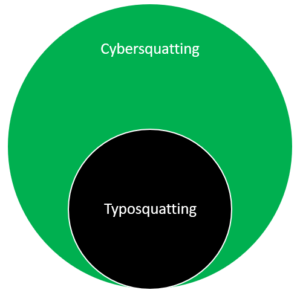
The negotiation started with an offer of $10. Microsoft eventually settled with him, and now redirects to Microsoft's main page. After he registered the name, Microsoft sued him for infringement because the name sounded too similar to the company's website. He thought registering the name would entertain potential employers. The most famous one involves a man named Mike Rowe. Many of the most famous examples of cybersquatting and typosquatting have involved celebrities and well-known companies. Examples of Cybersquatting and Typosquatting Cybersquatters grabbed as many of them as they could in hopes of making a quick profit. These extensions end with specific terms such as dot-band, dot-credit, and dot-store. The modern version of cybersquatting involves new URL extensions.įrom 2014 to 2016, hundreds of new URL options became available. Over time, businesses and celebrities grew wise to the practice. Popular celebrities such as Madonna, Paris Hilton, and Jennifer Lopez were all victims of cybersquatting. The other popular practice was to register the name of a famous person. Then, they sold the URLs to the businesses. They did not register their brand names.Ĭybersquatters registered the URLs first. During the early years, many companies didn't know about the internet. The internet didn't reach critical mass until the 21 st century. How Has Cybersquatting Changed Over the Years? So, the strategy is often extremely profitable. A URL hijacking only pays a few dollars to register the domain. Many companies are willing to pay thousands of dollars for these "fake" URLs. The goal is to sell the URLs to the owners of real sites and brands. The owner of these knockoff URLs does not want to build a website at the address. In this case, a person buys URLs are spelled similarly to other sites and brands. Similar to typosquatting is cybersquatting, also known as domain squatting.

It sent malware downloads to visitors that thought they were going to. One of the earliest examples of typosquatting was in 2006 with the site. That person might use phishing techniques to steal personal data from a web user.

The danger of typosquatting is that misspelled domain owners are often hackers. Once the user hits enter, their browser takes them to the wrong site. This happens when a person accidentally types the letter on the keyboard one away from the intended letter. The typosquatter gets site visits from internet users who were trying to visit.
#Typosquatting examples free#
The URL's owner gets free traffic and often adds malware to the internet user's system without that person even clicking a link.įor example, a typosquatter wants to buy URLs such as, , and. This mistake causes the user to end up at the wrong website.

A person makes a simple error when trying to enter a URL. Typosquatting, also called URL hijacking or domain mimicry, occurs thanks to typing mistakes. Typosquatters get easy traffic thanks to typos. Typosquatting is the act of buying URLs similar to famous or well-known ones in hopes that people type the wrong letter when entering the web address.


 0 kommentar(er)
0 kommentar(er)
